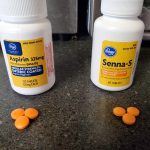Understanding Fixed Dose Combinations: A Comprehensive Overview

In the realm of pharmaceuticals, the concept of fixed dose combination (FDC) plays a pivotal role in optimizing therapeutic outcomes and enhancing patient compliance. Fixed dose combinations involve the amalgamation of two or more active pharmaceutical ingredients (APIs) in a single dosage form, providing a synergistic effect that addresses multiple facets of a medical condition.
This article explores the definition, advantages, challenges, regulatory aspects, and the future outlook of fixed dose combinations in the pharmaceutical landscape.
Definition of Fixed Dose Combinations
Fixed dose combinations, often abbreviated as FDCs, refer to pharmaceutical formulations that contain a fixed ratio of two or more active ingredients in a single dosage form. Unlike single-drug formulations, where only one API is present, FDCs offer the advantage of combining multiple therapeutic agents to achieve a more comprehensive and effective treatment strategy. These combinations are carefully designed to address specific medical conditions or symptoms, aiming to improve treatment outcomes while minimizing side effects.
Here are some examples of commonly used Fixed Dose Combinations:
1. Combination of Antihypertensive Agents:
• Enalapril + Hydrochlorothiazide
2. Antibiotic Combinations:
• Amoxicillin + Clavulanic Acid
• Sulfamethoxazole + Trimethoprim (Co-trimoxazole)
3. Antiretroviral Therapy for HIV:
• Tenofovir + Emtricitabine + Efavirenz
4. Oral Contraceptives:
• Ethinyl Estradiol + Norethindrone (Combined Oral Contraceptives)
5. Combination for Diabetes Management:
• Metformin + Glibenclamide
6. Cough and Cold Formulations:
• Paracetamol + Phenylephrine + Chlorpheniramine
7. Anti-inflammatory and Analgesic Combinations:
• Ibuprofen + Paracetamol
8. Antifungal Combinations:
• Clotrimazole + Beclomethasone + Neomycin
9. Gastrointestinal Combinations:
• Omeprazole + Domperidone (For acid reflux and gastric motility)
10. Anti-malarial Combinations:
11. Cardiovascular Combinations:
• Amlodipine + Atorvastatin (For hypertension and cholesterol management)
12. Combination Inhalers for Respiratory Conditions:
• Fluticasone + Salmeterol (For asthma and chronic obstructive pulmonary disease)
13. Multivitamin and Mineral Combinations:
• Iron + Folic Acid + Vitamin B12
14. Antiplatelet and Anticoagulant Combinations:
• Aspirin + Clopidogrel
15. Psychotropic Medication Combinations:
• Fluoxetine + Olanzapine (Used in certain psychiatric conditions)
It’s important to note that the availability of specific FDCs may vary based on geographical location and regulatory approvals in different countries. Additionally, the use of FDCs should be based on a healthcare professional’s recommendation and tailored to an individual’s specific health needs.
Advantages of Fixed Dose Combinations
1. Enhanced Efficacy: One of the primary advantages of FDCs is their potential for enhanced therapeutic efficacy. The synergistic interaction between multiple active ingredients can lead to a more robust and comprehensive treatment response.
2. Improved Patient Compliance: Simplifying complex treatment regimens can significantly enhance patient compliance. FDCs streamline medication schedules by consolidating multiple drugs into a single dosage form, reducing the likelihood of missed doses and simplifying the overall treatment process.
3. Synergistic Action and Reduced Side Effects: The combination of different active ingredients in FDCs allows for a synergistic action, where the effects of each component complement and enhance the overall therapeutic outcome. This synergy can also lead to a reduction in individual drug doses, minimizing the risk of adverse effects.
4. Optimized Dosing Regimens: FDCs enable healthcare providers to optimize dosing regimens based on the pharmacokinetic and pharmacodynamic properties of the combined drugs. This optimization can result in improved efficacy and a more favorable safety profile.
Challenges Associated with Fixed Dose Combinations
1. Drug-Drug Interactions: Combining multiple drugs in a single dosage form may introduce the potential for drug-drug interactions. Understanding and mitigating these interactions is crucial to ensure the safety and efficacy of FDCs.
2. Complex Formulation Development: Designing FDCs requires a deep understanding of the pharmacological properties of each active ingredient and their compatibility in a single formulation. The complexity of formulation development poses a challenge for manufacturers.
3. Regulatory Hurdles: Regulatory approval for FDCs can be more challenging than for single-drug formulations. Regulatory agencies often require comprehensive data on the safety and efficacy of each component, as well as evidence supporting the rationale for combining them.
4. Variable Patient Response: Individuals may exhibit variable responses to FDCs due to differences in metabolism, genetics, or disease severity. Tailoring FDCs to accommodate these variabilities is a challenge in personalized medicine.
Regulatory Aspects of Fixed Dose Combinations
1. Approval Process: The regulatory approval process for FDCs involves stringent evaluation of safety, efficacy, and quality parameters. Manufacturers are required to submit comprehensive data on each active ingredient and the rationale behind combining them in a fixed ratio.
2. Post-Marketing Surveillance: Continuous monitoring of FDCs post-approval is essential to identify and address any emerging safety concerns. Regulatory agencies may implement post-marketing surveillance programs to ensure the ongoing safety and efficacy of these combinations.
3. Global Variability in Regulations: Regulatory requirements for FDCs can vary significantly between countries. Harmonization efforts aim to align regulatory standards globally, but differences still exist, posing challenges for multinational pharmaceutical companies.
The Future of Fixed Dose Combinations
1. Advancements in Formulation Technologies: Ongoing advancements in pharmaceutical formulation technologies, such as nanotechnology and controlled-release systems, are likely to influence the development of more sophisticated and effective FDCs.
2. Personalized Medicine: The future of FDCs may be closely tied to the broader trend of personalized medicine. Tailoring fixed dose combinations to individual patient characteristics, including genetics and biomarkers, could lead to more precise and effective treatments.
3. Therapeutic Areas of Focus: The expansion of FDCs is expected in therapeutic areas such as cardiovascular diseases, infectious diseases, and chronic conditions where a multi-pronged approach is beneficial. The development of FDCs for orphan diseases may also gain attention.
Conclusion
Fixed dose combinations represent a significant advancement in pharmaceutical therapy, offering a holistic approach to treating complex medical conditions. While challenges exist in terms of formulation, regulatory approval, and potential interactions, the benefits of enhanced efficacy, improved patient compliance, and optimized dosing regimens make FDCs a valuable addition to the healthcare landscape. As technology continues to advance and our understanding of personalized medicine deepens, the future of fixed dose combinations holds promise for more targeted and effective therapeutic interventions.





